Windows are an integral part of home design, adding to both aesthetics and the functional aspects of a home's interiors. The choice of the right type of window not only improves the ventilation and natural lighting within the structure, but also adds value to the building, apart from keeping the home safe and well-insulated. Let's take a look at some window types and their characteristics.

Arched Windows
 These serve to capture the attention of the observer when positioned prominently, adding an interesting element of design to an otherwise geometric structure. The size and the span of the arch allow interesting variations. They are often used with other window types to embellish appearance.
These serve to capture the attention of the observer when positioned prominently, adding an interesting element of design to an otherwise geometric structure. The size and the span of the arch allow interesting variations. They are often used with other window types to embellish appearance.
Additional Resources | Arched Window Costs

Attic Windows
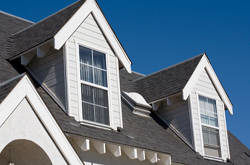 An important source of light and ventilation to the attic structure, these usually are available in different styles, allowing for an efficient mix of form and function. They tend to transform an otherwise primarily storage space into a multi-functional room.
An important source of light and ventilation to the attic structure, these usually are available in different styles, allowing for an efficient mix of form and function. They tend to transform an otherwise primarily storage space into a multi-functional room.
Additional Resources | Attic Window Costs

Awning Windows
 Rectangular in shape and hinged at the top, these open outward to mimic the appearance and purpose of a true awning. Allowing free flow of air and light, they can be left open even during the rainy seasons, as the water automatically tends to drain off their surfaces.
Rectangular in shape and hinged at the top, these open outward to mimic the appearance and purpose of a true awning. Allowing free flow of air and light, they can be left open even during the rainy seasons, as the water automatically tends to drain off their surfaces.
Additional Resources | Awining Window Costs

Bay Windows
 These add grandeur to the structure, allowing for un-interrupted views of the exterior settings, while providing ample light and ventilation to the interiors. Ideally a combination of three windows, a straight large window in the center, flanked by narrower angled windows at either side, these also make home interiors more spacious, as they extend outwards from the wall surface.
These add grandeur to the structure, allowing for un-interrupted views of the exterior settings, while providing ample light and ventilation to the interiors. Ideally a combination of three windows, a straight large window in the center, flanked by narrower angled windows at either side, these also make home interiors more spacious, as they extend outwards from the wall surface.
Additional Resources | Bay Window Costs

Basement Egress Windows
 These help make basement spaces more useful, insulated and safe, while also doubling up as emergency exits, especially if the basements are inhabited. Costs, however, bound to vary based on the safety features and the type of construction.
These help make basement spaces more useful, insulated and safe, while also doubling up as emergency exits, especially if the basements are inhabited. Costs, however, bound to vary based on the safety features and the type of construction.
Additional Resources | Basement Egress Window Costs

Bow Windows
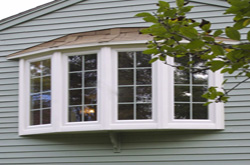 These are smooth semi-circular or curved variations of the bay window that provide similar aesthetic and functional benefits. The depth of the arc, in fact, is usually varied to create either a subtle or a bold design. Further customizations may also include seating spaces, making for an excellent viewing area.
These are smooth semi-circular or curved variations of the bay window that provide similar aesthetic and functional benefits. The depth of the arc, in fact, is usually varied to create either a subtle or a bold design. Further customizations may also include seating spaces, making for an excellent viewing area.
Additional Resources | Bow Window Costs

Casement Windows
 These units hinged on one side and opening out wide into the exteriors offer excellent views, are easy to maintain, and provide effective insulation, apart from, of course, channeling natural light and air into home interiors.
These units hinged on one side and opening out wide into the exteriors offer excellent views, are easy to maintain, and provide effective insulation, apart from, of course, channeling natural light and air into home interiors.
Additional Resources | Casement Window Costs

Circle Windows
 These are ornamental fixed units very similar to portholes on ships and serve as an excellent aesthetic add-on. Custom sizes, frames and patterns help match these units to almost any existing structure; however, the installation could be expensive.
These are ornamental fixed units very similar to portholes on ships and serve as an excellent aesthetic add-on. Custom sizes, frames and patterns help match these units to almost any existing structure; however, the installation could be expensive.
Additional Resources | Circle Window Costs

Chord Windows
They resemble semi-circular windows but are not necessarily half-circles. Placed above a standard door or window frame, chord windows add to the aesthetic appeal of the structure.

Clerestory Windows
 Horizontal windows lining the upper floors or walls of a home are in essence a design element that not only highlights the structure but also offers adequate privacy. They tend to illuminate the interiors while offering ample ventilation, and make great alternatives to skylights.
Horizontal windows lining the upper floors or walls of a home are in essence a design element that not only highlights the structure but also offers adequate privacy. They tend to illuminate the interiors while offering ample ventilation, and make great alternatives to skylights.
Additional Resources | Clerestory Window Costs

Colonial Windows
 Characteristic of homes in the colonial era, these small, repetitive, shuttered units are still in use in older structures that hold on to the vintage design elements.
Characteristic of homes in the colonial era, these small, repetitive, shuttered units are still in use in older structures that hold on to the vintage design elements.
Additional Resources | Colonial Window Costs

Craftsman Windows
Short and wide, these windows are most often used in single story homes, especially those sporting large attics and eaves. Typically comprising multiple small panes in the top sash and a single large pane in the lower sash, these units add an interesting variation to an otherwise standard window.

Dormer Windows
 Most ideal for habitable spaces that are built by extending attics beyond the roof structure, these windows make such dormers ventilated, lively and cozy. The key is to choose the right window style even before constructing the dormer for the project to be cost-effective and functional.
Most ideal for habitable spaces that are built by extending attics beyond the roof structure, these windows make such dormers ventilated, lively and cozy. The key is to choose the right window style even before constructing the dormer for the project to be cost-effective and functional.
Additional Resources | Dormer Window Costs

Double Hung Windows
 Comprising two sashes, both or either one of them being movable, these units allow either the top or bottom half of the window to be kept open at any point in time.
Comprising two sashes, both or either one of them being movable, these units allow either the top or bottom half of the window to be kept open at any point in time.
Additional Resources | Double-hung Window Costs

Egress Windows
 These are ideally aptly sized emergency exits that allow people to easily slip out of the home when faced with any threat. Ideally located in the basement, they are mandatory in homes where basements double up as habitable spaces.
These are ideally aptly sized emergency exits that allow people to easily slip out of the home when faced with any threat. Ideally located in the basement, they are mandatory in homes where basements double up as habitable spaces.
Additional Resources | Egress Window Costs

Fixed Frame Windows
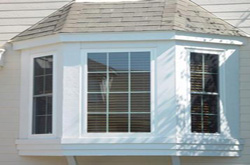 These are, in fact, ornamental structures that serve to illuminate home interiors and offer a panoramic view of the outdoors. They are not operable and, hence, are more secure, despite not aiding with ventilating the space.
These are, in fact, ornamental structures that serve to illuminate home interiors and offer a panoramic view of the outdoors. They are not operable and, hence, are more secure, despite not aiding with ventilating the space.
Additional Resources | Fixed Frame Window Costs

Garden Windows
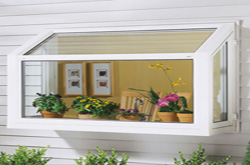 They serve to house small potted plants on their sills, making them ideal for the kitchen. Structured as an angular bay with glass panels on all sides, they allow fresh air and light into kitchen space.
They serve to house small potted plants on their sills, making them ideal for the kitchen. Structured as an angular bay with glass panels on all sides, they allow fresh air and light into kitchen space.
Additional Resources | Garden Window Costs

Geometric Windows
 These windows are all about geometric shapes other than the common squares, rectangles and circles. Arcs and semi-circles are not included in this group. A mix and match of these shapes in different sizes can enhance the visual appeal of home exteriors. Customizations come at a heavy price, though.
These windows are all about geometric shapes other than the common squares, rectangles and circles. Arcs and semi-circles are not included in this group. A mix and match of these shapes in different sizes can enhance the visual appeal of home exteriors. Customizations come at a heavy price, though.
Additional Resources | Geometric Window Costs

Glider Windows
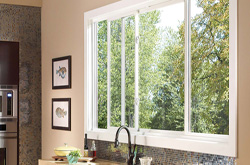 These are just sliding windows, where both panes can be slid either way to keep one half of the window open. Sleek, efficient, compact and easy to clean, these units are ideal where homes are situated close to each other and cannot afford conventional windows that open outward into the exteriors.
These are just sliding windows, where both panes can be slid either way to keep one half of the window open. Sleek, efficient, compact and easy to clean, these units are ideal where homes are situated close to each other and cannot afford conventional windows that open outward into the exteriors.
Additional Resources | Glider Window Costs

Hexagon Windows
 These are simply hexagonal-shaped windows, designed and fitted to suit custom specifications. Frames are usually made from vinyl, wood or composite material. The costs tend to vary based on the size of the window and the material used.
These are simply hexagonal-shaped windows, designed and fitted to suit custom specifications. Frames are usually made from vinyl, wood or composite material. The costs tend to vary based on the size of the window and the material used.
Additional Resources | Hexagon Window Costs

Half Circle Windows
Semi-circular frames fitted with glass make a design statement when placed over the standard door or window frames, apart from flooding interiors with natural light. The choice of frame material, custom frame patterns and sizes determine the costs of the unit.

Hopper Windows
Hoppers are very similar to awnings and casements, in that they too are hinged on one side at the bottom of the frame. The top part of the window opens out completely to allow abundant natural light and air into otherwise cramped spaces.
Additional Resources: Hopper Window Cost

Impact Windows
True to their name, these windows are made from laminated glass and serve to protect homes from the impact of natural events such as tornadoes and storms. The layer of lamination is designed to survive such disasters, preventing home contents from damages. There are different types of impact window glass that cater to different geographic locations and the severity of disasters that occur in these regions.

Louvered Windows
Slatted windows are new to this part of the world. Adjustable glass slats on tall frames not only make interesting design elements, but also tend to make interiors airy and bright. They are, however, not suitable for all structures and may not offer the best of security or insulation, given their build.

Palladian Window
Originally designed by an Italian architect, this window is a classic piece of architecture comprising three identical frames, with the center frame crowned with an arch. Graceful and ornate, this unit is an expensive choice.

Patio Doors
Opening out into the patio, this glass-paned frame offers the best of natural light and ventilation. Mounted with either hinged doors or sliders, the unit seamlessly merges the home interiors with the outdoor settings.
Additional Resources: Patio Doors Cost

Picture Window
This is a single pane of plain glass, decoratively framed to the required size to capture a picture perfect view of the stunning exteriors. Aptly placed to offer an undisturbed view of a scenic setting and embellished with decorative inserts, this window serves as a focal point of a home. It is, however, a fixed setting that does not assist with ventilation.

Porthole Window
This fixed window is just a simple pane of circular glass fitted in a round metal frame. There are, however, no patterns as in circular windows. They are available in different sizes, and make an interesting addition to any room.

Single Hung Window
Space-saving, compact and functional, a single hung window has the top sash fixed in place, while the lower sash can be vertically slid to open the window. They are also quite cost-effective and easy to maintain.
Additional Resources: Single Hung Window Cost

Skylights
Originally fixed on the ceiling, skylights offered a great view of the world above the home, while flooding it with natural light. Skylights of today can be opened; some are retractable and few others sport vents offering effective ventilation to home interiors, apart from also being customizable to add security features.
Additional Resources: Skylight Cost

Soundproof Windows
These work with existing windows to effectively blot out external noise. The unit comprises two glass sheets with a layer of lamination between them. This unit is fitted on the interiors of an existing window, allowing for a 3-inch empty air space that acts as an effective sound barrier.
Additional Resources: Soundproof windows Cost

Sunroom Windows
They are the key to the form and function of the space. An appropriate design offers energy efficiency, comfort, privacy and spectacular external views. Sliders, picture windows, double-hungs or hinged windows can double up as sunroom windows.
Additional Resources: Sunroom Windows Cost

Storm Windows
These units, fitted on the exteriors or interiors of existing glass windows, provide additional insulation and protection in times of inclement weather.

Thermal Windows
Thermal windows are useful to improve the energy efficiency of homes, as they serve to effectively insulate home interiors. The type of glass and its energy retention capacity matter most when it comes down to selecting thermal windows, which usually comprise two glass panes.

Transom Windows
These units are used in conjunction with existing doors and windows, placed above their frames to add both aesthetic value and allow the interiors to be naturally lit. Usually rectangular and fixed, these units are available in different shapes and can be customized to provide ventilation as well. Not to mention, decorative transom units enhance the look of the structure.